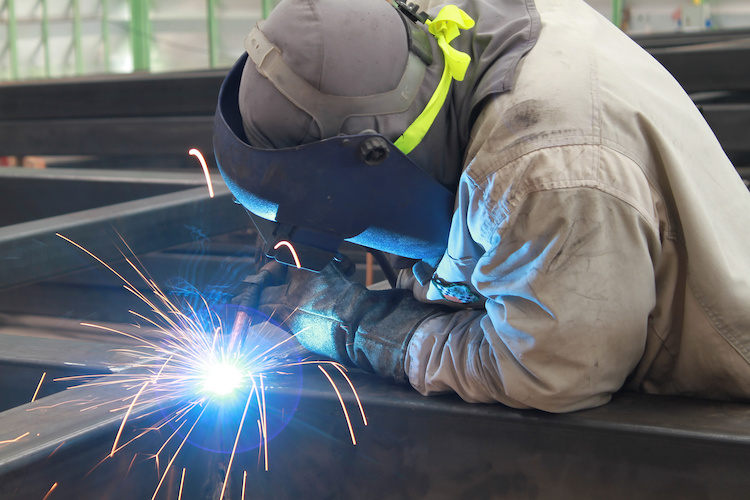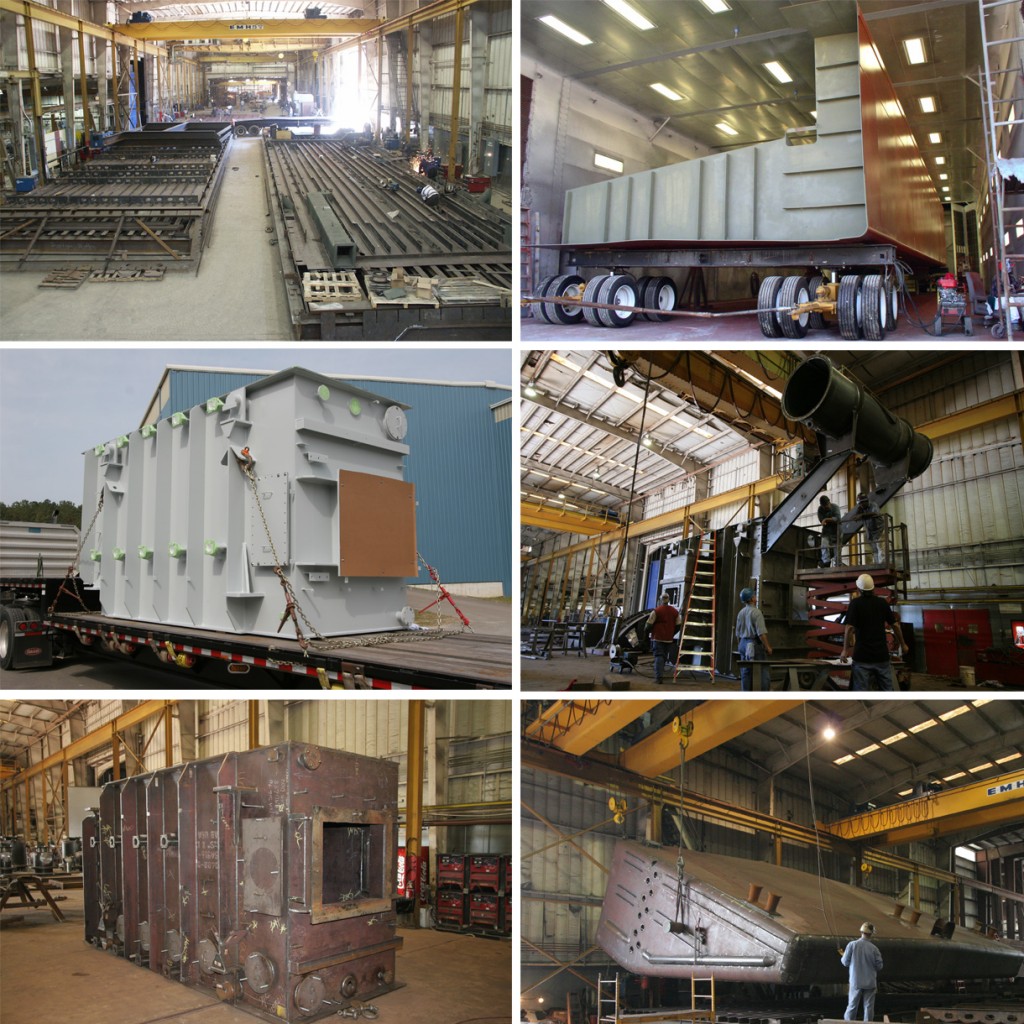Cutting-Edge Metal Fabrication Melbourne: Customized Solutions for Every Project
Cutting-Edge Metal Fabrication Melbourne: Customized Solutions for Every Project
Blog Article
Innovative Trends in Steel Fabrication: Enhancing Resilience and Precision
In the realm of steel fabrication, the pursuit of sturdiness and precision has actually led to a wave of cutting-edge fads that are reshaping the sector. From improvements in welding innovations to the assimilation of robot automation in construction procedures, the landscape of steel production is progressing rapidly. High-strength alloy growth, paired with the utilization of 3D modeling and simulation software, is pressing the boundaries of what is achievable in terms of architectural honesty and accuracy. In addition, the growing emphasis on lasting methods in steel manufacturing is not only driving effectiveness however likewise promoting a more ecologically mindful method to construction. These trends are not simply shaping the present yet likewise laying the foundation for the future of steel construction, assuring further improvements in toughness and accuracy.
Advanced Welding Technologies
In the realm of steel construction, the fostering of advanced welding technologies has considerably reinvented the sector's strategy to achieving remarkable high quality and accuracy in architectural welds. Advanced welding modern technologies, such as laser light beam welding and rubbing stir welding, have emerged as game-changers in the field. Laser light beam welding employs a focused laser light beam to sign up with steel parts with impressive precision and speed, making it optimal for complex styles and slim products. On the various other hand, friction mix welding produces extremely solid bonds by mechanically intermixing the particles of the materials at the joint, eliminating the requirement for melting the metal. These technologies use many advantages, consisting of decreased heat-affected zones, marginal distortion, and improved mechanical residential properties in the bonded joints. By leveraging these advanced welding methods, steel makers can elevate the toughness, toughness, and accuracy of their structural welds, satisfying the progressively requiring demands of modern building and construction tasks.
Robotic Automation in Fabrication
Embracing robot automation has actually ended up being a keystone of modern-day steel construction techniques, enhancing procedures and enhancing effectiveness throughout the market. Robotics are revolutionizing the method steel components are manufactured, supplying unequaled accuracy and speed while reducing human error. These automated systems can deal with repetitive jobs with regular accuracy, bring about higher quality final product.
One key benefit of robot automation in steel manufacture is the ability to work around the clock without exhaustion, substantially enhancing manufacturing output. This constant procedure minimizes downtime and accelerates task timelines, eventually saving prices for suppliers. In addition, robotics can be programmed to execute detailed jobs that might be dangerous or tough for human employees, enhancing safety and security in the workplace.
Furthermore, robot automation makes it possible for seamless integration with other electronic technologies, such as computer-aided layout (CAD) software program and Internet of Points (IoT) systems (steel fabricators melbourne). This interconnected method enhances interaction between different phases of construction, maximizing workflows and making certain real-time monitoring and control. As the steel construction industry proceeds to progress, robotic automation sticks out as a transformative force driving effectiveness and accuracy in manufacturing processes

High-Strength Alloy Advancement
The advancement of high-strength alloy growth in steel construction is improving the market's approach to boosting material resilience and performance. High-strength alloys are engineered to exhibit premium mechanical buildings, such as boosted tensile strength, durability, and rust resistance compared to conventional steel grades. By incorporating these sophisticated alloys into fabrication procedures, manufacturers can generate components that stand up to higher stress here are the findings degrees and extreme settings, resulting in even more resilient and trusted output.
One trick benefit of high-strength alloy advancement is the capability to decrease material density without endangering structural stability. This not only causes lighter-weight elements however additionally contributes to cost savings and improved performance in construction and setting up procedures. Additionally, the enhanced strength-to-weight ratio of these alloys enables the style and building of structures with higher load-bearing capacities while decreasing general weight.
3D Modeling and Simulation Software
Improvements in steel fabrication procedures have actually been substantially thrust by the integration of cutting-edge 3D modeling and simulation software program devices. These tools allow fabricators to develop thorough online designs of their tasks, allowing them to picture the final product with accuracy prior to any type of physical job starts.

Sustainable Practices in Steel Manufacturing
Including sustainable practices into steel manufacturing procedures is important for lessening environmental effect and making certain long-lasting source schedule. One vital lasting technique is the adoption of energy-efficient innovations to reduce greenhouse gas exhausts throughout the steel manufacturing procedure. This consists of making use of sustainable power sources, such as solar or wind power, to power steel plants and applying energy-efficient equipment to maximize power use.
Another vital facet of sustainable steel production is the responsible sourcing of raw materials. This includes making certain that the iron ore and other sources made use of in steelmaking are acquired from honest and environmentally pleasant resources. By advertising transparency in the supply chain and adhering to rigorous ecological requirements, steel suppliers can minimize the unfavorable impacts of source removal on neighborhood ecological communities and neighborhoods.

Conclusion
Finally, the innovative patterns in steel fabrication such as innovative welding modern technologies, robot automation, high-strength alloy growth, 3D modeling and simulation software program, and lasting techniques are enhancing the toughness and accuracy of steel products. These advancements are revolutionizing the steel manufacture sector by improving sustainability, effectiveness, and quality. It is clear that the future of steel construction hinges on welcoming these sophisticated technologies to satisfy the demands of contemporary construction and manufacturing sectors.
In the world of steel manufacture, the search of toughness and accuracy has actually led to a wave of cutting-edge fads that are improving the industry.In the realm of steel construction, the adoption of advanced welding technologies has significantly transformed the market's strategy to attaining remarkable high quality and go to website precision in structural welds. As the steel construction sector continues to progress, robot automation stands out as a transformative pressure driving effectiveness and accuracy in manufacturing processes.
In addition, reusing and reusing steel scrap and waste products play a considerable duty in enhancing the sustainability of steel manufacturing. steel fabrication melbourne.In final thought, the innovative fads in steel manufacture such as advanced welding modern technologies, robot automation, high-strength alloy advancement, 3D modeling and simulation software, and lasting practices are boosting the sturdiness and precision of steel items
Report this page